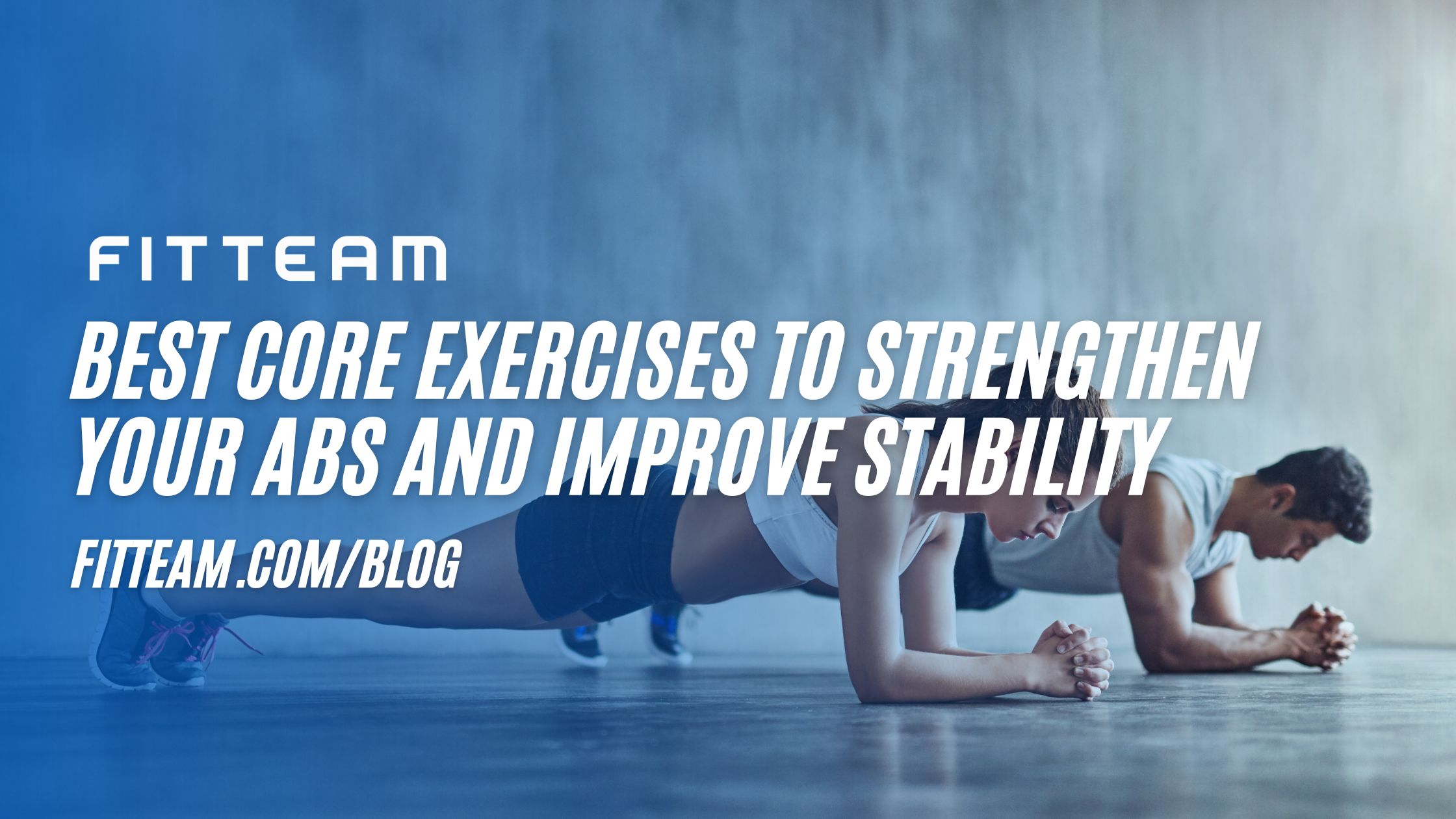
08 Sep Best Core Exercises to Strengthen Your Abs and Improve Stability
Best Core Exercises to Strengthen Your Abs and Improve Stability
A strong core is more than just about aesthetics. It’s crucial for overall body stability, posture, and injury prevention. Whether you’re an athlete, gym-goer, or someone who enjoys staying fit, incorporating core exercises into your routine will help enhance your performance and improve daily activities. Below are the best exercises to target your abs and boost stability.
1. Planks
Planks are the quintessential core exercise, engaging multiple muscles including the rectus abdominis, obliques, and transverse abdominis. This static hold strengthens the core, promotes better posture, and improves balance.
- How to perform: Start in a push-up position, with your elbows on the ground directly under your shoulders. Hold your body in a straight line from head to toe, engaging your abs, glutes, and thighs.
- Tips: Aim for 30-second holds to start, gradually increasing time as your strength improves.
2. Dead Bug
The dead bug exercise works both your abs and coordination. It’s particularly beneficial for training the core to stabilize while the arms and legs are in motion.
- How to perform: Lie on your back with your arms extended toward the ceiling. Lift your legs to a 90-degree angle. Slowly lower one arm and the opposite leg toward the ground while keeping your lower back pressed into the floor. Return to the start position and repeat with the opposite limbs.
- Tips: Focus on controlled movements to maximize core engagement and prevent your lower back from arching.
3. Russian Twists
This exercise primarily targets your obliques but also engages your entire core. It’s an excellent movement for improving rotational strength and stability.
- How to perform: Sit on the floor with your knees bent and feet flat. Lean back slightly, holding a weight or medicine ball in front of your chest. Rotate your torso to one side, then the other, keeping your core tight.
- Tips: Keep your back straight and avoid rounding your shoulders to prevent strain.
4. Bicycle Crunches
Bicycle crunches are a dynamic exercise that activates the rectus abdominis and obliques, building both core strength and endurance.
- How to perform: Lie on your back with your hands behind your head. Lift your knees to a 90-degree angle. Bring one knee towards your chest while rotating your opposite elbow to meet it. Alternate sides in a pedaling motion.
- Tips: Move slowly and deliberately for maximum effectiveness.
5. Bird Dog
This exercise strengthens the lower back, abs, and hips, making it great for stability and balance.
- How to perform: Start on all fours with your hands under your shoulders and knees under your hips. Extend one arm forward and the opposite leg backward, keeping your back flat and hips level. Hold for a second, then return to the starting position and switch sides.
- Tips: Engage your core throughout the movement to maintain balance.
6. Mountain Climbers
Mountain climbers offer both a core workout and a cardiovascular boost. This high-intensity movement challenges your entire body while specifically targeting the abdominals.
- How to perform: Start in a plank position. Bring one knee towards your chest, then switch legs in a running motion while maintaining a plank posture.
- Tips: Keep your core tight to prevent your hips from sagging.
7. Side Planks
Side planks strengthen your obliques and provide lateral stability to the core.
- How to perform: Lie on your side with one forearm directly under your shoulder. Stack your legs on top of each other and lift your hips, forming a straight line from head to heels. Hold this position, then switch sides.
- Tips: Start with 20-30 second holds on each side and work up to longer durations.
Conclusion
Incorporating these core exercises into your regular routine will not only help you achieve a toned midsection but will also improve overall body stability. A strong core supports good posture, enhances performance in other physical activities, and reduces the risk of injury. Consistency is key, so start slow, focus on form, and increase intensity as you become stronger.

